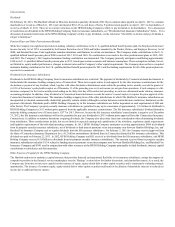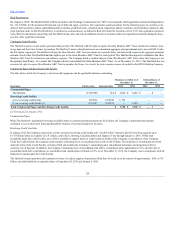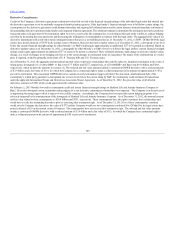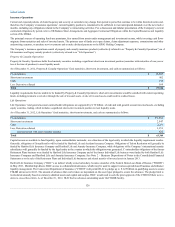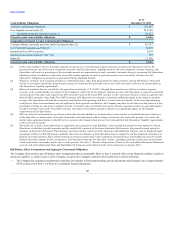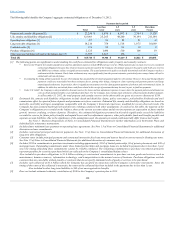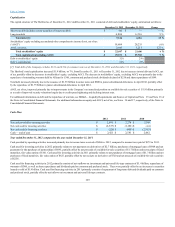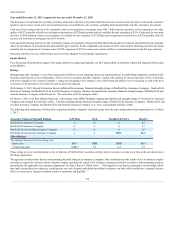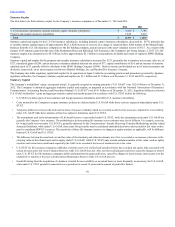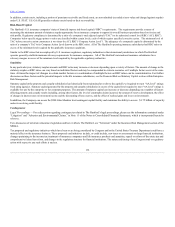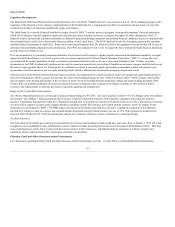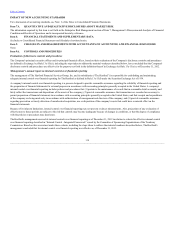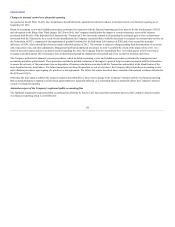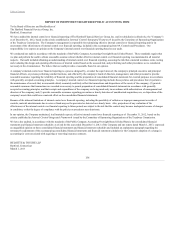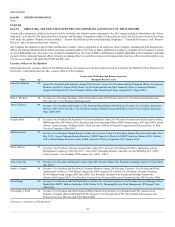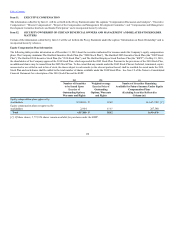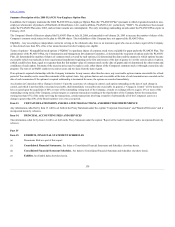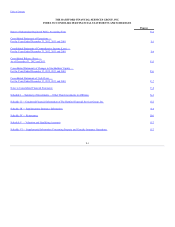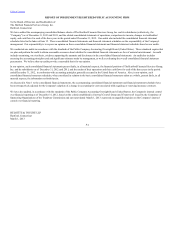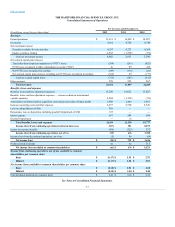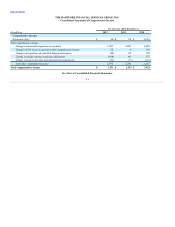The Hartford 2012 Annual Report Download - page 134
Download and view the complete annual report
Please find page 134 of the 2012 The Hartford annual report below. You can navigate through the pages in the report by either clicking on the pages listed below, or by using the keyword search tool below to find specific information within the annual report.
Table of Contents
Legislative Developments
The Dodd-Frank Wall Street Reform and Consumer Protection Act of 2010 (the “Dodd-Frank Act”) was enacted on July 21, 2010, mandating changes to the
regulation of the financial services industry. Implementation of the Dodd-Frank Act is ongoing and may affect our operations and governance in ways that
could adversely affect our financial condition and results of operations.
The Dodd-Frank Act vests the Financial Stability Oversight Council (“FSOC”) with the power to designate “systemically important” financial institutions,
which will be subject to special regulatory supervision and other provisions intended to prevent, or mitigate the impact of, future disruptions in the U.S.
financial system. Systemically important institutions are limited to large bank holding companies and nonbank financial companies that are so important that
their potential failure could “pose a threat to the financial stability of the United States.” The FSOC finalized its rule for designating systemically important
nonbank financial institutions in April 2012. Based on its most current financial data, The Hartford is below the quantitative thresholds that will be used to
determine which nonbank companies merit consideration. The FSOC has indicated it will review on a quarterly basis whether non-bank financial institutions
meet the metrics for further review.
If we are designated as a systemically important institution, The Hartford could be subject to higher capital requirements and additional regulatory oversight
imposed by the Federal Reserve, as well as to post-event assessments imposed by the Federal Deposit Insurance Corporation (“FDIC”) to recoup the costs
associated with the orderly liquidation of other systemically important institutions in the event one or more such institutions fails. Further, in certain
circumstances, the FDIC is authorized to petition a state court to commence an insolvency proceeding to liquidate an insurance company that fails in the event
the insurer's state regulator fails to act. If designated, we could also be subject to increased capital requirements or quantitative limits with respect to our
sponsorship of and investments in private equity and hedge funds, which could limit our discretion in managing our general account.
Other provisions in the Dodd-Frank Act that may impact us include: the requirement for central clearing of, and/or new margin and capital requirements on,
derivatives transactions, which we expect will increase the costs of our hedging program; the new “Federal Insurance Office” within Treasury; the possible
adverse impact on the pricing and liquidity of the securities in which we invest resulting from the proprietary trading and market making limitation of the
Volcker Rule; the possible prohibition of certain asset-backed securities transactions that could adversely impact our ability to offer insurance-linked
securities; and enhancements to corporate governance, especially regarding risk management.
Budget of the United States Government
The Obama Administration has not yet released its proposed federal budget for FY 2014. Last year's proposal, entitled “FY 2013, Budget of the United States
Government” (the “Budget”) includes proposals that if enacted, would have affected the taxation of life insurance companies and certain life insurance
products. In particular, the proposals would have changed the method used to determine the amount of dividend income received by a life insurance company
on assets held in separate accounts used to support products, including variable life insurance and variable annuity contracts, which are eligible for the
dividends received deduction (“DRD”). The DRD reduces the amount of dividend income subject to tax and is a significant component of the difference
between the Company's actual tax expense and expected amount determined using the federal statutory tax rate of 35%. If this proposal is included in the
proposed federal budget for FY 2014 and subsequently enacted, the Company's actual tax expense could increase, reducing earnings.
Tax Rate Extension
The steps taken by the federal government to avoid automatic tax increases and spending cuts that would have gone into effect on January 1, 2013 will result
in higher tax rates, including for many small business owners whom are already preparing for increased costs associated with healthcare reform. This may
cause small businesses to hire fewer workers and decrease investment in their businesses, including limiting the purchases of vehicles, property and
equipment, which could adversely affect our business and results of operations.
Guaranty Fund and Other Insurance-related Assessments
For a discussion regarding Guaranty Fund and Other Insurance-related Assessments, see Note 13 of the Notes to Consolidated Financial Statements.
133


